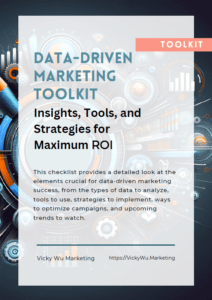Data-Driven Marketing is revolutionizing how businesses approach their growth strategies. By harnessing the power of data, companies can tailor their marketing efforts with precision, leading to significantly improved ROI. This data-centric approach has proven its worth, with businesses adopting it seeing a notable increase in profitability. It’s not just about collecting data; it’s about interpreting it correctly and making informed decisions that align with customer behaviors and market trends.
Understanding Marketing Analytics
Types of Marketing Data
At the core of data-driven marketing is the ability to analyze a variety of data types. This includes customer behavior patterns, such as browsing and purchasing habits, as well as engagement metrics like click-through rates and email open rates. Understanding these metrics helps in crafting strategies that resonate with the target audience.
Tools and Technologies
Navigating the world of marketing analytics requires sophisticated tools and technologies. From Google Analytics to more advanced AI-powered analytics platforms, the proper tools enable marketers to capture and interpret complex datasets. This is where expertise becomes crucial; understanding and utilizing these tools effectively can make the difference between a successful campaign and a missed opportunity.
Strategies for Implementing Data-Driven Marketing
Integrating Analytics into Marketing Strategies
The integration of analytics into marketing strategies is a balancing act between creative marketing and empirical data. It involves using insights from data to guide creative decisions, ensuring that marketing campaigns are not only innovative but also targeted and effective.
Case Studies and Examples
Successful examples of data-driven marketing abound across various industries. From e-commerce companies using customer purchase histories to personalize recommendations, to B2B businesses utilizing lead scoring models to prioritize their sales efforts, these cases demonstrate the transformative power of data-driven strategies.
Optimizing Campaigns for Enhanced ROI
Analyzing and Interpreting Data
Optimizing marketing campaigns using data-driven insights involves deep analysis and interpretation of data. It’s about understanding not just the ‘what’ but the ‘why’ behind consumer behavior. This requires a level of expertise in both marketing and data analysis, as the insights drawn from the data are used to refine and improve ongoing campaigns.
Real-Life Examples
Consider a real estate company that uses data analytics to target potential home buyers based on their browsing history and engagement with online listings. By focusing their marketing efforts on high-interest groups, they significantly improve their conversion rates and ROI.
Future of Data-Driven Marketing
Emerging Trends and Technologies
The future of data-driven marketing is exciting, with AI and machine learning leading the charge. These technologies promise to bring even more sophisticated data analysis capabilities, allowing for more personalized and effective marketing strategies.
Preparing for Future Challenges
As the landscape evolves, staying ahead in data-driven marketing will require continuous learning and adaptation. Keeping abreast of emerging trends and technologies, and understanding how to leverage them, will be crucial for marketing success.
Data-driven marketing is not just a trend; it’s a fundamental shift in how marketing is done. It requires a blend of expertise in both marketing and data analytics to truly harness its power. For businesses looking to improve their ROI, embracing data-driven strategies is not just advisable; it’s essential.






